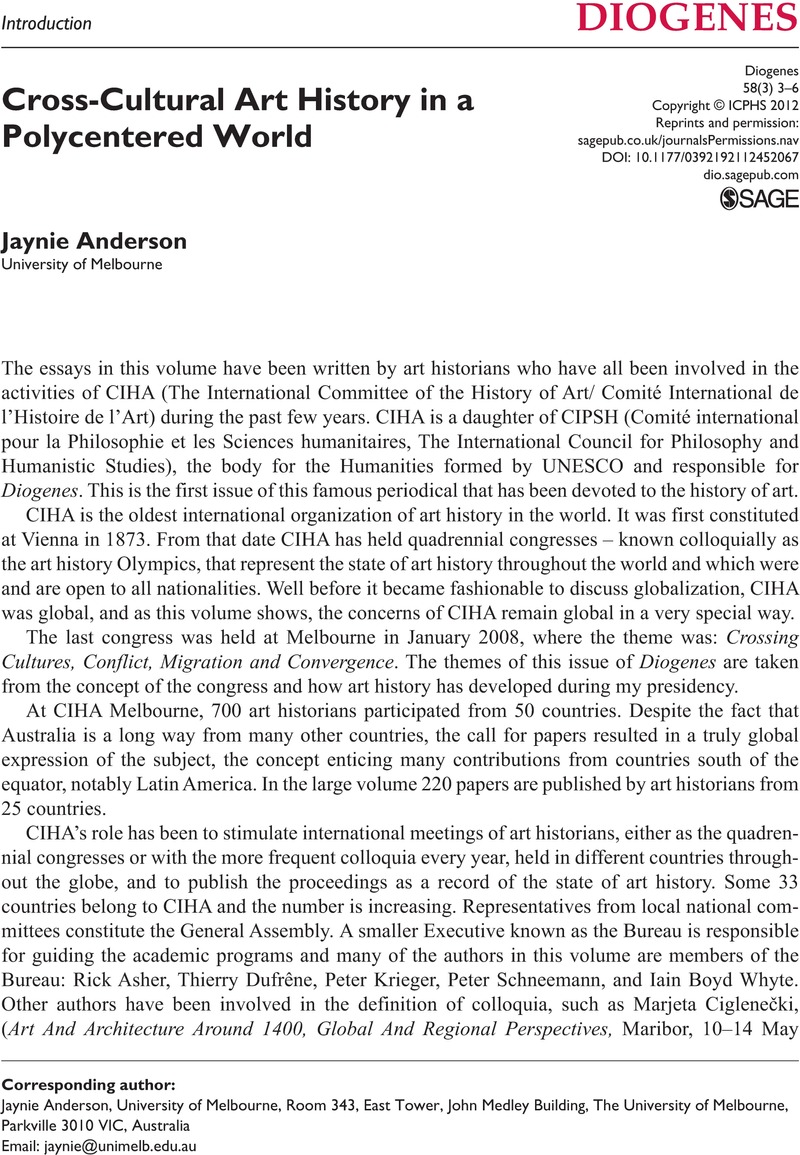No CrossRef data available.
Cross-Cultural Art History in a Polycentered World
Published online by Cambridge University Press: 01 January 2024
Abstract
An abstract is not available for this content so a preview has been provided. Please use the Get access link above for information on how to access this content.

- Type
- Introduction
- Information
- Diogenes , Volume 58 , Issue 3: Cross-Cultural Art History in a Polycentered World , August 2011 , pp. 3 - 6
- Copyright
- Copyright © ICPHS 2012


